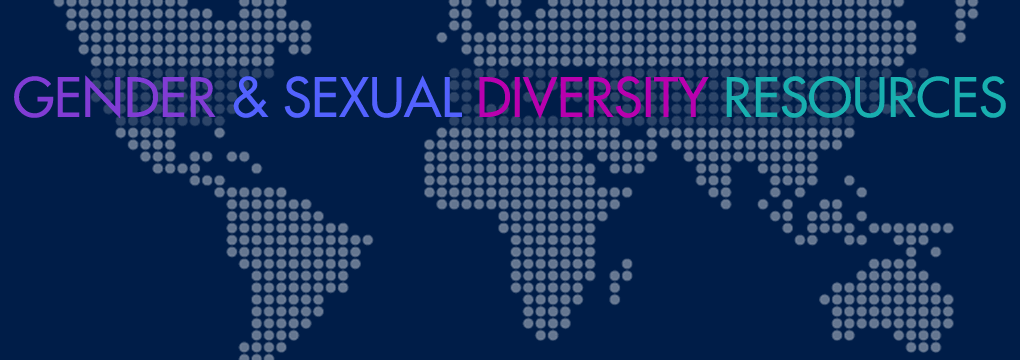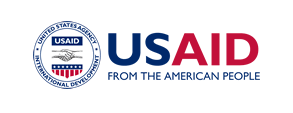The Health Policy Project ended in 2016. Work continued under Health Policy Plus (HP+) until 2022.
Gender and Sexual Diversity Resources: Module 1

Module 1: Non-discrimination Policies
Numerous U.S. Government and global mandates and policies either directly or indirectly aim to protect gender and sexual minorities (GSM) in the workplace and in programs. However, to effectively ensure the protection of GSM, U.S. government staff and implementing partners need to have a thorough understanding of these mandates and policies, as well as the societal gender norms that affect them. This module highlights some of the key mandates, frameworks, policies, and laws currently in place and the historical background surrounding their enactment.
U.S. Government Workplace Mandates and Specific Policies
The U.S. Government has produced various mandates that protect the rights of all individuals, including gender and sexual minorities. The following resources review of U.S. policies and positions as they relate to gender and sexual diversity (GSD).
PEPFAR Strategy Documents
http://www.pepfar.gov/about/strategy/
PEPFAR 3.0 – Controlling the Epidemic: Delivering on the Promise of an AIDS-free Generation and its predecessor, The PEPFAR Blueprint: Creating an AIDS-free Generation, detail the progress made and describe the U.S. Government's strategy in responding to the global AIDS crisis. They focus on scale-up of HIV interventions, multisectoral organization and resource management, gender issues, stigma and discrimination against people living with HIV and key populations, and data collection and monitoring.
Video Resources
You can click the title to watch the video here, or follow the link to open on YouTube. Title and descriptions reflect those available on Youtube at the time of posting.
- LiveAtState: Human Rights of Lesbian, Gay, Bisexual, and Transgender People
U.S. Deputy Assistant Secretary, Bureau of Democracy, Human Rights, and Labor Daniel Baer participates in a conversations on human rights of lesbian, gay, bisexual, and transgender people at the U.S.-European Media Hub in Brussels, Belgium on June 20, 2013.
https://www.youtube.com/watch?v=g-TbSO1Cwng - Secretary Clinton Delivers Remarks on International Human Rights Day
U.S. Secretary of State Hillary Rodham Clinton delivers remarks on International Human Rights Day in Geneva, Switzerland on December 6, 2011.
https://www.youtube.com/watch?v=Zu9DRfFzFsE - Secretary Kerry Celebrates LGBT Pride Month
U.S. Secretary of State John Kerry celebrates Lesbian, Gay, Bisexual, and Transgender Pride Month at the U.S. Department of State in Washington, D.C., on June 7, 2013.
https://www.youtube.com/watch?v=1KeaoB-kAGY
Global Policies and Frameworks
International bodies have enacted relevant policies and frameworks to guide countries and communities in addressing GSD in their program efforts. The following resources include overarching principles and specific recommendations, such as the decriminalization of homosexuality, that improve sociopolitical environments for GSM.
Blueprint for the Provision of Comprehensive Care to Gay Men and Other Men Who Have Sex with Men (MSM) in Latin America and the Caribbean— PAHO
http://www.paho.org/hq/index.php?option=com_content&view=article&id=2449&Itemid=40316
As stated in the Introduction, this blueprint,"has been created as a guide for clinicians and health administrators in LAC Region countries, in both the formal health sector as well as within specialized MSM health clinics. It is intended to strengthen the ability of health care providers to address the distinct health needs of gay men and other MSM within the context of health promotion and health care delivery."
Gender Equality Strategy 2014-2017 — UNDP
http://www.undp.org/content/undp/en/home/librarypage/womens-empowerment/gender-equality-strategy-2014-2017/
From the foreward by UNDP Administrator Helen Clark, this strategy, "highlights the institutional mechanisms UNDP will put in place to ensure that staff at all levels are held accountable for delivering gender equality results, and for creating and maintaining workplaces where women and men have equal opportunities to contribute to our mission and advance within our organization."
Gender Equality Strategy: Action Plan 2014-2016 — Global Fund
http://www.theglobalfund.org/en/publications/2014-03-07_Gender_Equality_Strategy_Action_Plan/
The Global Fund say this document, "Presents the key points of the Global Fund's Gender Equality Strategy and outlines strategic actions to be undertaken in 2014-2016 to integrate gender equality issues in all aspects of the Global Fund's work."
Getting to Zero: 2011-2015 Strategy — UNAIDS
http://www.unaids.org/en/aboutunaids/unaidsstrategygoalsby2015
According to their website, "The UNAIDS strategy aims to advance global progress in achieving country set targets for universal access to HIV prevention, treatment, care and support and to halt and reverse the spread of HIV and contribute to the achievement of the Millennium Development goals by 2015."
Health and Human Rights
Health and human rights are fundamental to ensuring that all individuals live full and prosperous lives. The following resources provide a comprehensive review of human rights concepts and their application to GSM.
Born Free and Equal: Sexual Orientation and Gender Identity in International Human Rights Law
http://www.ohchr.org/Documents/Publications/BornFreeAndEqualLowRes.pdf
The Introduction states, "The purpose of this booklet is to set out the core obligations that States have towards LGBT persons, and describe how United Nations mechanisms have applied international law in this context. For the past eighteen years, United Nations human rights treaty bodies and special procedures have documented violations of the human rights of LGBT people and analyzed State compliance with international human rights law. They have accumulated a body of evidence that shows how individuals are targeted on the basis of their sexual orientation or gender identity, and have issued specific guidance to States... The booklet is also intended to assist human rights defenders and rights-holders generally to call States to account for breaches of international human rights law."
The Yogyakarta Principles: The Application of International Human Rights Law in Relation to Sexual Orientation and Gender Identity
http://www.yogyakartaprinciples.org/principles_en.htm
The Yogyakarta Principles are a set of principles on the application of international human rights law in relation to sexual orientation and gender identity. As stated in the introduction, "The Principles affirm binding international legal standards with which all States must comply. They promise a different future where all people born free and equal in dignity and rights can fulfil that precious birthright."
Video Resources
You can click the title to watch the video here, or follow the link to open on YouTube. Title and descriptions reflect those available on Youtube at the time of posting.
- A History of LGBT Rights at the United Nations
Human Rights Day 2013 marked the 65th anniversary of the adoption of the Universal Declaration of Human Rights by the UN General Assembly in 1948. Watch this short infographic video to see how it all came to be and what has happened in LGBT rights since.
https://www.youtube.com/watch?v=4c3QFPX_LmM&list=UU3L8u5qG07djPUwWo6VQVLA&index=20 - The Riddle—A Message from the United Nations Human Rights Office
...In this simple, high-impact video from the UN human rights office, individuals from diverse backgrounds pose questions directly to the viewer designed to expose the nature of human rights violations suffered by LGBT people around the world. The video includes cameo appearances by UN Secretary-General and High Commissioner for Human Rights Navi Pillay....
https://www.youtube.com/watch?v=sYFNfW1-sM8 - What Are Human Rights?
Human Rights Video Education.
https://www.youtube.com/watch?v=oh3BbLk5UIQ
Gender Roles and Expression
The cultural understanding of gender roles deeply impacts the lives of GSM. The following resources provide an overview of gender-based disparities and strategies to address them.
PEPFAR: Addressing Gender and HIV/AIDS
http://www.pepfar.gov/press/2013/205796.htm
This document outlines PEPFAR's strategy to reduce HIV risk and increase access to HIV prevention, care, and treatment services by addressing gender norms and inequities. The strategy focuses on increasing gender equity in programs and services, reducing violence, engaging men to address norms and behaviors, increasing legal protections for women and girls, and increasing their access to income and productive resources.
United States Strategy to Prevent and Respond to Gender-Based Violence Globally
http://www.state.gov/r/pa/prs/ps/2012/08/196342.htm
The official press release declares, "The Strategy advances the Department of State's efforts to raise the status of women and girls around the world and underscores the United States Government's commitment to preventing and responding to gender-based violence. Such violence undermines not only the safety, dignity, and human rights of the millions of individuals who experience it, but also threatens public health, economic stability, and security." Download links are available from the release to the Strategy, the Executive Order, and a fact sheet.
The Global Gender Gap Report 2013
http://www3.weforum.org/docs/WEF_GenderGap_Report_2013.pdf
In the preface, Executive Chairman Klaus Schwab says, "Since 2006, through the Global Gender Gap Report series, the World Economic Forum has been quantifying the magnitude of gender-based disparities and tracking their progress over time. By providing a comprehensive framework for benchmarking global gender gaps, the Report identifies countries that are role models in dividing their resources equitably between women and men, regardless of the overall resource level."
Global Reports on the State of GSD Issues and Development
Civil society organizations and research institutions are essential partners in global engagement and advocacy for GSM. The following resources present data collected by various organizations to inform the development of GSD-related policy.
The Relationship between LGBT Inclusion and Economic Development: An Analysis of Emerging Economies
http://www.soginews.com/williams-institute-lgbt-inclusion-linked-countries-economic-performance/
"Greater inclusion of lesbian, gay, bisexual, and transgender (LGBT) people in emerging economies is positively associated with a country's economic development, according to a study released by the Williams Institute, the U.S. Agency for International Development (USAID), and its partners in the LGBT Global Development Partnership. The findings suggest that LGBT equality should be part of economic development programs and policies."
Inclusion Matters: The Foundation for Shared Prosperity
https://openknowledge.worldbank.org/handle/10986/16195
According to the overview, "This report provides a frame of reference to help understand and move toward social inclusion. It is intended for policy makers, academics, activists, and development partners—indeed, anyone who is curious about what inclusion can mean and how it can be addressed in a world that is in the throes of formidable transitions. ... it offers a definition and a framework to help advance the agenda of social inclusion."
UNAIDS Gap Report
http://www.unaids.org/en/resources/campaigns/2014/2014gapreport/gapreport
"How do we close the gap between the people moving forward and the people being left behind? This was the question we set out to answer in the UNAIDS Gap report. Similar to the Global report, the goal of the Gap report is to provide the best possible data, but, in addition, to give information and analysis on the people being left behind." You can downoad the full report or individual chapters by population at the link above.

